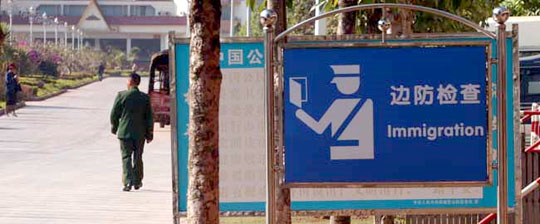China looks to Southeast Asia, but roads continue to hinder development
This is the fourth in a series of articles that looks at China’s borders. As China has grown in the last 30 years, so have the often complicated relationships it has with its many varied neighbors. In this article, we take a look at Laos.
By Andy Scott
VIENTIANE, Laos, Jan. 17 – Trade between China and the Association of Southeast Asian Nations has boomed in the past 15 years, growing more than 20 percent a year and reaching US$202.5 billion in 2007. The two sides are each other’s fourth-largest trading partners. When completed, the China-ASEAN FTA will be the world’s largest, encompassing around 1.7 billion consumers and with total trade estimated at US$1.2 trillion.
Much of that trade is dependent on a modern highway system throughout the region, but so far, the dream of a connected Southeast Asia is still just that. The infrastructure has yet to catch up with hard economic reality.
To see the challenge set out, one only needs to board a bus in Kunming, bound for the border. At the first gas station south of Kunming, trucks and buses wait to fill their tanks for the journey. The road, four divided lanes of limited-access black asphalt, cuts through mountains and across valleys, at one moment soaring almost above the clouds, the next in a deep ravine. The Kunming-Jinghong Highway is as much a testament to China’s rise as the Three Gorges Damn or the city of Shenzhen.
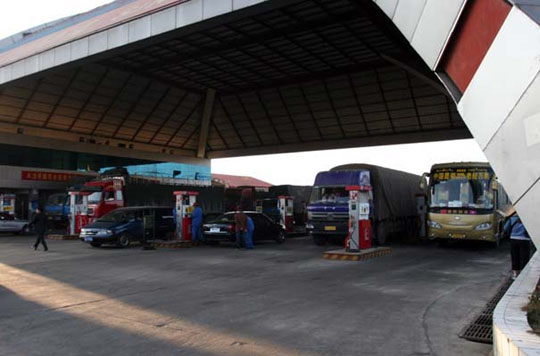
Trucks line up at a gas station outside Kunming before heading south
South of the Yunnan town of Simao, the four-lane divided highway gives way to a winding road barely big enough for a single truck. Construction continues on the divided road, but current travel is restricted to the older road that curves through the region, skirting the Xishuangbanna National Reserve.
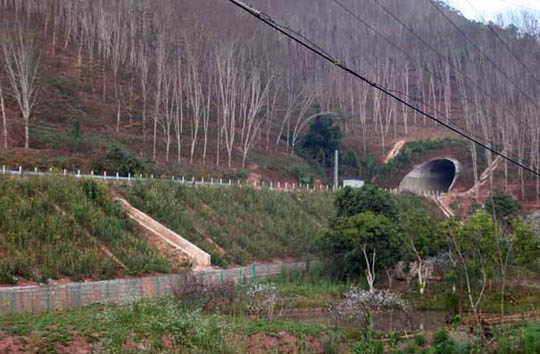
Construction continues on the highway through Xishuangbanna to the border with Laos
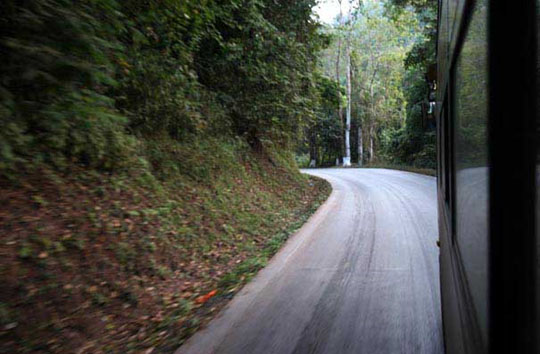
The road narrows through Xishuangbanna, winding around the edge of the national reserve
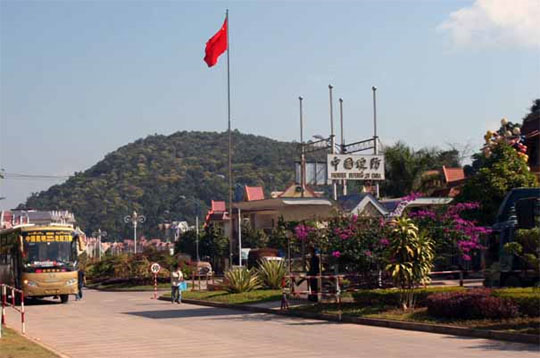
The Chinese border post at Mohan, Yunnan Province
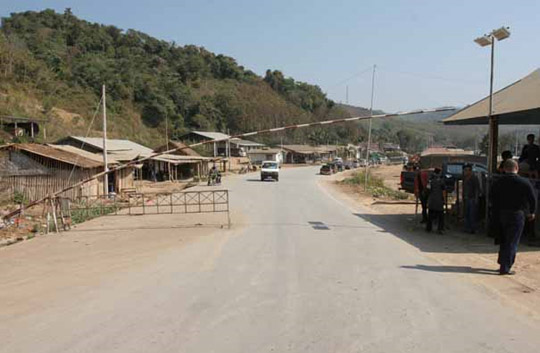
The customs post in Boten is small and doesn't see a lot of traffic
Once trucks and buses have passed through the border post of Boten, Laos, they continue south on Highway 1 towards Oudomxai, the most important crossroads in northern Laos linking routes to and from Thailand, Vietnam and China.
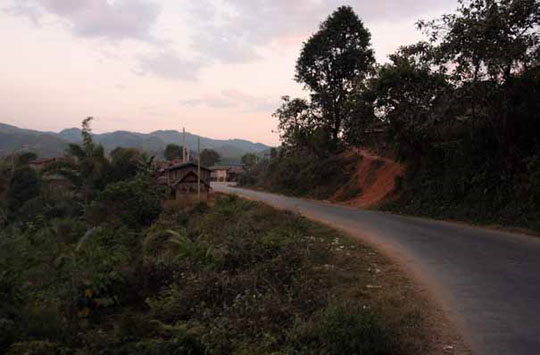
Small villages cling to Highway 1 as it winds through the mountains of Northern Laos, trucks and buses sound their horns to warn villagers to clear the road of children and livestock
The junction of Highways 1, 2 and 4, Oudomxai straddles the China-Laos trade route and trucks to and from China pass through the town daily. The markets, nightclubs and most of the hotels are all run by mainland Chinese business interests.
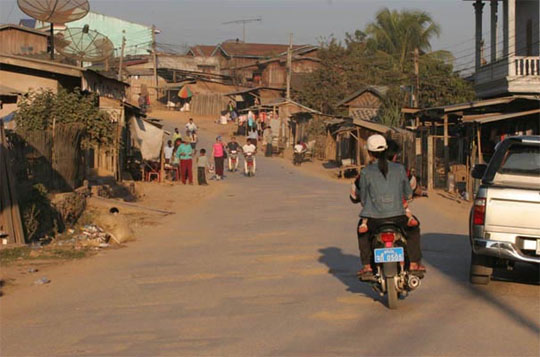
The transportation hub of Oudomxai has seen a boom in Chinese traders and goods
Further south of Oudomxai, Highway 1 meets up with Highway 13, Laos’ great artery running the length of the country. Because the highway runs through Vientiane, it is the corridor for trade between China and Thailand. It is this corridor that China is especially interested in, and Chinese construction crews from Yunnan can regularly be found on the route, strengthening bridges and widening the road. Still graded but not paved in parts just three years ago, the entire stretch of Highway 13 from Oudomxai to Vientiane is now completely sealed, and as it descends from the mountains of northern Laos, it widens allowing for faster truck travel.
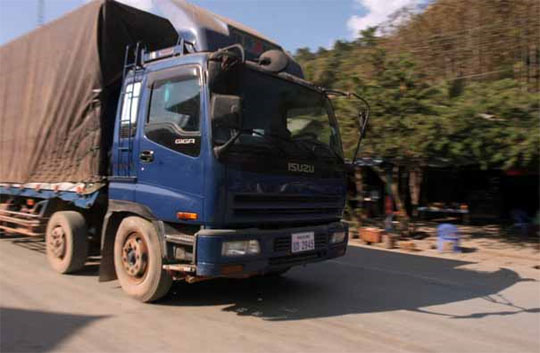
A truck heading south in Laos loaded with Chinese goods
The approximately 1,800 kilometer long route between Kunming and Bangkok could witness an annual goods flow worth some US$100 billion if the China-ASEAN Free Trade Area is established. The FTA, which aims to establish a China-ASEAN Free Trade Agreement (FTA) by 2010 for the six most developed ASEAN economies, and 2015 for the less developed countries.
But as the current state of infrastructure in southern Yunnan Province and Laos shows, the road network lags far behind China and ASEAN’s goal of an effective and efficient highway system. The future of this possibly massive trade corridor lies in Highways 1 and 13 through Laos. For it is the infrastructure in this desperately poor country that will determine the future of this massive trade corridor.
This is the fourth in a continuing series that focuses on China’s borders. The complete series to date can be found here.
- Previous Article China eyes Mongolia’s resources
- Next Article China Gives Southeast Asia’s Poorest First Time Access to Consumer Goods

